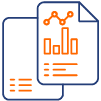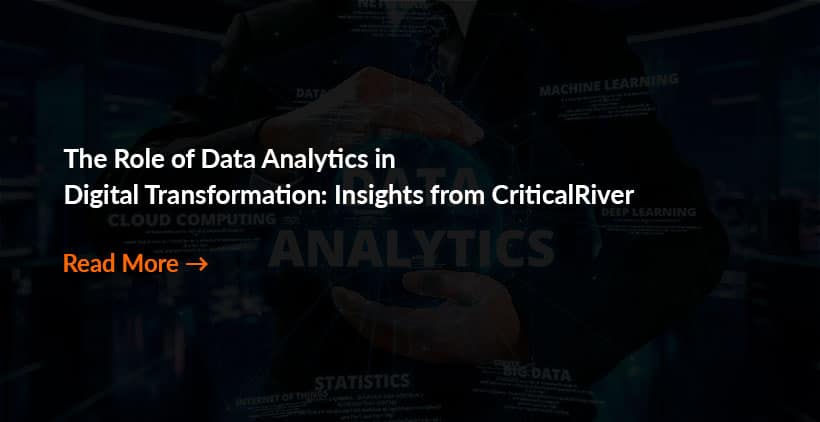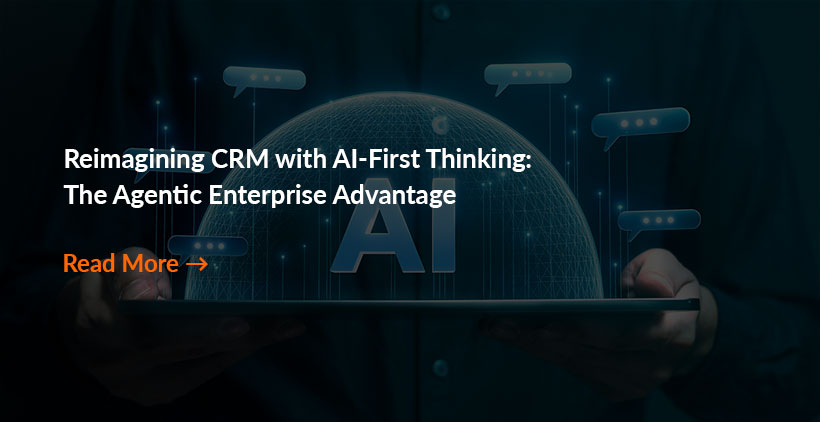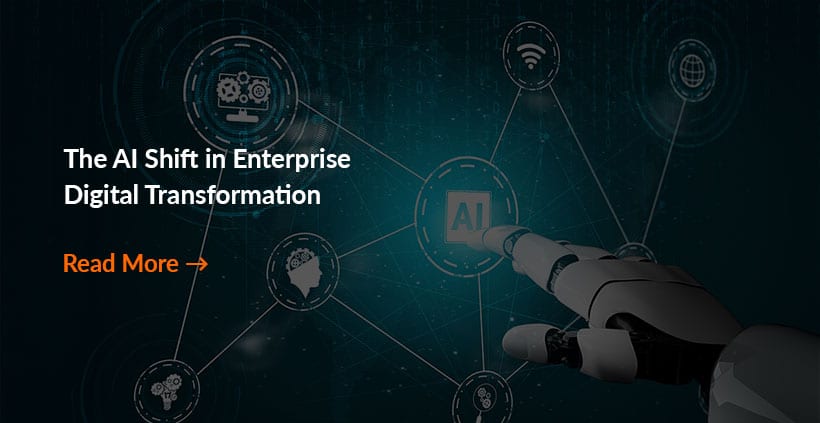
Cross-industry enterprises have been rolling out and upgrading their digitized processes for years. And yet, many continue to face hurdles in generating value from their technological changes, usually because they lack quality datasets. Poor data strategies can make digital transformation (DX) journeys haphazard or cause them to fizzle out. If we check this with numbers, on average, 87.5% of companies have experienced failure, even after spending millions on executing modernization activities.
Without a data-rich foundation, DX undertakings lack clarity on end-user needs and the areas where tasks can be streamlined for profitable operations. Insufficient or inaccurate data also limits an organization’s ability to adapt to market changes and shape plans on where to invest. While the role of data in DX is significant, companies also face:
- Increasing demand for e-services and personalized, omni-channel experiences
- Constantly expanding volume of data to collect and analyze
- A tendency for data to get siloed with business growth
- Rapidly evolving digital trends and tools
CriticalRiver believes enterprises can successfully enact their data-driven digitalization programs in this complex environment by focusing on the key factors influencing data analytics. These include:

Clear Data Strategy Aligned with Business Goals
The first step towards workflow modernization is to outline a robust data strategy that aligns with business goals. Identifying key metrics, mapping data sources, and ensuring that every data-led initiative navigates to measurable outcomes is essential. Besides guiding investment and technology decisions, a well-defined data strategy enables all IT and business unit stakeholders to collaborate for common, meaningful, and attainable objectives.

Integrated and Scalable IT Infrastructure
A modern, scalable tech stack is required to make the most of massive volumes and varieties of data. To this end, enterprises have adopted cloud platforms and integration tools that simplify data access and usage. By managing a unified infrastructure they can avoid silos, boost agility, and buttress a foundation for real-time data analytics and AI-based insights that facilitate quicker and smarter decision-making for DX.

Spotlight on Data Governance and Quality
The efficacy of digitalization depends on trustworthy data. When companies reinvent their business practices and models with Industry 4.0 technologies, they must institute efficient data governance frameworks defining ownership, access privileges, and compliance protocols. Simultaneously, they must invest in protocols and tools to cleanse and validate data to derive reliable and actionable insights. High-quality data increases confidence and shapes strategic decisions across business units.

AI and Advanced Analytics for In-Depth Insights
Enterprises cannot rely merely on traditional data-based studies and reports to thrive in the evolving digital landscape. Machine learning, predictive modeling, and advanced analytics deliver more profound insights on consumer behavior, operational strengths and weaknesses, and market opportunities. From scrutinizing historical data to forecasting future trends, AI and its subsets make DX robust and sustainable. Converting raw data into real-time strategic advantage, these next-gen capabilities are also instrumental in automating routine tasks and personalizing customer experiences.

Data-Powered Culture
Technology cannot drive transformation alone; people must willingly embrace it and understand how it complements their abilities for better results. Business leaders must champion data-driven thinking and integrate it into the organizational culture as they implement data analytics. Regular training, change management, sharing of internal success stories, and KPIs tied to data usage nurture buy-in across teams. When data is valued in a work environment, it inspires experimentation, continuous improvement, and resilience in the face of disruption.

Constant Monitoring and Adjustments
Digital transformation is an ongoing process that requires companies to deploy feedback loops, monitor the performance of data-based initiatives, and adapt as necessary. Frequent reviews and agile methodologies allow organizations to respond swiftly to market shifts or technological changes. Timely upgrades ensure the transformation stays relevant to business goals, continually refines processes, and meets customer expectations.
Applying Data Analytics in Digital Transformation: Technologies and Architecture
Once the strategies for harnessing data to operationalize digitalization campaigns are in place, attention turns to the techniques that enliven them. Some of the methodologies and architectures that translate data plans into real-world impact, supporting scalable transformations in an organization, are:

Edge Analytics
By processing data near the source instead of relying only on centralized cloud systems, Edge Analytics minimizes latency, fuels real-time decision-making, and reduces data transfer costs. These abilities make it a good choice for industries with IoT networks, remote operations, and time-sensitive decision-making across distributed environments.

Graph Analytics
Graph Analytics helps businesses comprehend complex relationships between linked entity data in a network or objects in a graph. It is beneficial in detecting patterns for fraudulent transactions, building recommendation systems through customer reviews and purchases, and determining supply chain efficiency. Special algorithms like clustering, partitioning, breadth-first search, and connected components uncover the insights that traditional data analysis tools often miss when making intelligent decisions in DX.

Data Fabric
An architecture for end-to-end integration and real-time management of data across platforms and locations, Data Fabric offers a unified view of data for different business requirements. Weaving data from multiple sources simplifies access, maintains consistency, and expedites actionable insights to help organizations move faster on their DX path.

Explainable AI
Explainable AI clarifies how AI and machine learning frameworks make decisions. It keeps the algorithm’s workings transparent and understandable. For companies progressing DX, Explainable AI fortifies trust, ensures compliance, and enables stakeholders to act on insights assuredly, making intelligent data analytics successful and accountable.
The Road Ahead
The road to future-ready digital transformation is paved with data. It will offer the signs to envision and execute strategic decision-making. Companies that treat data as a core asset (not a byproduct) and turn it into timely, relevant actions will lead a fast-changing digital economy.
To know all about CriticalRiver’s secure data analytics solutions, write to us at contact@criticalriver.com




